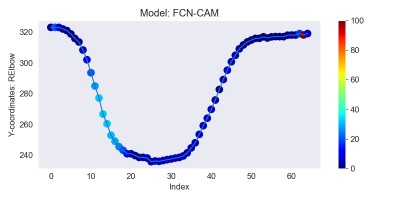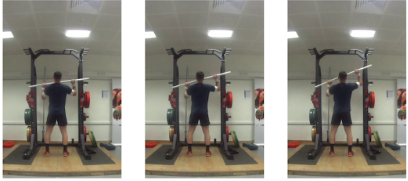Interpretable Classification of Human Exercise Videos through Pose Estimation and Multivariate Time Series Analysis
This repository contains code and data for the paper Interpretable Classification of Human Exercise Videos through Pose Estimation and Multivariate Time Series Analysis., accepted as a full research paper at 5th International Workshop on Health Intelligence (W3PHIAI-21) at AAAI21. The paper presents an approach for the classification and interpretation of human motion from video data. It applies state-of-the-art advances in the area of Human Pose Estimation for video and Multivariate Time Series Classification and Interpretation. The aim is to facilitate physiotherapists, coaches and rehabilitation patients by providing feedback after the execution of physical exercises.
The data used are pre-recorded videos of the Military Press exercise. The first step consists of applying OpenPose to extract the time series data from the video. The second step classifies the extracted data using multivariate time series classification methods (MTSC). We chose deep learning methods FCN and Resnet for classification and 1NN-DTW as a baseline. MTSC methods such as MrSEQL, FCN, Resnet also support interpretation by highlighting the discriminative region. We further compared the results with the highly efficient ROCKET classifier, which also works well for multivariate time series.
 Fig 1 shows the overview of the proposed approach for the Military Press exercise. Going from raw video to
extracting and tracking body points using human pose estimation, and preparing the resulting data for time series
classification and interpretation.
Fig 1 shows the overview of the proposed approach for the Military Press exercise. Going from raw video to
extracting and tracking body points using human pose estimation, and preparing the resulting data for time series
classification and interpretation.
The data used is the video recordings of the execution of the Military Press (MP) exercise. Participants completed 10 repetitions of the normal form and 10 repetitions of induced forms. The data folder consists of the extracted time series data which is already splitted into training/test using the 70/30 split. The folder TrainTestData consists of data in the numpy format whereas the folder TrainTestDataSktime consists data in the sktime format. The data is further resampled to the max length for all the samples. There are roughly 1300 and 600 samples in training and testing data respectively. Each data sample is a multivariate time series data with a shape of 161x8 (161 length and 8 dimensions). Each dimension corresponds to the location of a given body part in a frame.
Please use the requirements.txt file to install all the dependencies. There is a configuration script for each classifier script which contains the relative paths to the exercise and data folders.
# All scripts follow the same structure
# python script_name.py --exercise_config path_to_exercise_config --knn_config path_to_knn_config | Classifier Name | Accuracy (Unnormalized data) | Accuracy (Normalized data) |
|---|---|---|
| 1NN-DTW | 0.58 | 0.50 |
| ROCKET | 0.81 | 0.68 |
| FCN | 0.72 | 0.65 |
| Resnet | 0.73 | 0.65 |
The above table shows the average accuracy on test data over three train/test splits. Normalising the time series significantly reduces the accuracy of all classifiers, due to losing information about the range and magnitude of the signal capturing the exercise movement. This points out the importance of time series classifiers that can also work work with unnonrmalised data.
We further use the Class Activation Mapping (CAM) explanation approach to find the discriminative region for a given time series. CAM provides a vector of importance weights for each point in the time series, a higher CAM value means a higher discriminative value for the classifier. The discriminative region is mapped back to the original frames in the video. For privacy concerns we haven't made the videos public. The figure below shows the discriminative region and the corresponding frames for FCN-CAM on class A. The 3 frames extracted are the ones corresponding to the top 3 highest values of CAM for this time series.
Fig 2 shows the discriminative region (left) and the corresponding frames (right) for class A for FCN-CAM.
Please cite this paper as:
@incollection{singh2021interpretable,
title={Interpretable Classification of Human Exercise Videos through Pose Estimation and Multivariate Time Series Analysis},
author={Singh, Ashish and Le, Binh Thanh and Le Nguyen, Thach and Whelan, Darragh and O’Reilly, Martin and Caulfield, Brian and Ifrim, Georgiana},
year={2021},
booktitle = {5th International Workshop on Health Intelligence(W3PHIAI-21) at AAAI21},
publisher={Springer}
}

